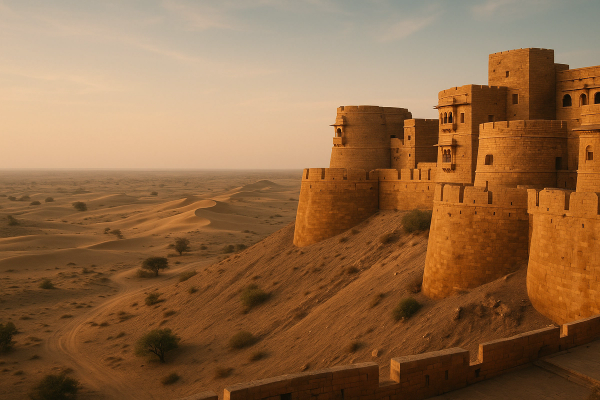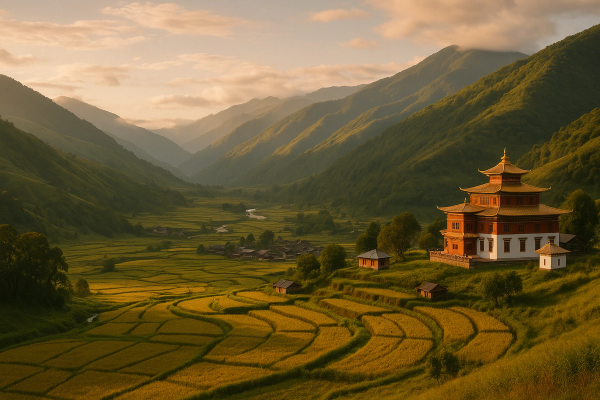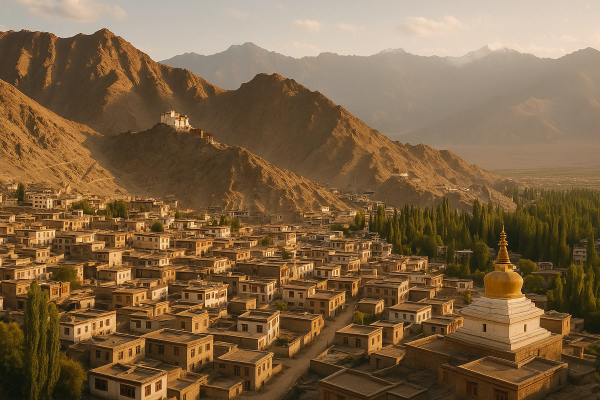Thinking About Trekking the Himalayas in 2025? Let's Talk.#
Okay, so the Himalayas. Just saying the word feels kinda... huge, right? Towering peaks, prayer flags flapping in the wind, maybe some yetis (okay probably not yetis, but still!). I remember the first time I seriously thought about actually going. Seemed insane. Like, only for super hardcore mountaineers, y'know? But spoiler alert: it's not. You, me, basically anyone with decent fitness and a bit of grit can experience Himalaya trekking. This isn't gonna be some expert-level guide, more like grabbing a coffee with a friend (that's me!) who's been there and wants to help you figure it out. We'll cover some of the best treks Himalayas has for beginners, especially if you're looking at an India mountain trek or maybe Nepal. This is your simple Himalayas travel guide for getting started in 2025. Let's get into it!¶
Okay, But Seriously... What's the Big Deal About the Himalayas?#
I mean, besides being the biggest, baddest mountain range on Earth? It's hard to explain the scale until you're there. It's just... vast. Humbling, honestly. It stretches across like five countries – India, Nepal, Bhutan, China (Tibet), and Pakistan. So the culture changes depending on where you go. You've got Hindu temples near Rishikesh, Buddhist monasteries in Ladakh or Nepal... it's this incredible mix. It’s more than just walking up hills; it's stepping into a different world. Sounds cheesy, but it kinda changes you. Or at least gives you really sore legs and amazing photos lol.¶
When Should You Actually Go? (Timing is Kinda Important)#
Alright, timing is pretty crucial 'cause the weather in the Himalayas doesn't mess around. You basically have two main trekking seasons, with monsoon and winter being... trickier.¶
Spring (March-May): Flowers and Warmer(-ish) Temps#
Things start warming up, snow melts at lower elevations, and rhododendrons (these amazing bright pink and red trees) start blooming, especially in Nepal and parts of India. It's beautiful. Downside? Can get a bit hazy sometimes, and maybe some pre-monsoon rain showers later in May. Still, a solid choice.¶
Autumn (September-November): Clear Skies & Crisp Air (My Fave!)#
Honestly, this is peak season for a reason. The monsoon washes away all the dust, so you get these super clear, crisp blue skies and stunning mountain views. Temperatures are generally comfortable – cool, not freezing (at least at lower altitudes). It is the most popular time, so trails can be busier. But imo, the reliable weather and views make it worth it, especially for your first Himalaya trekking trip.¶
Quick tip: Even in peak season (Autumn), starting your trek slightly earlier or later in the window (like early Sept or late Nov) can sometimes mean fewer crowds. Just be prepared for potentially colder temps later on.
Monsoon (June-August) is generally wet, muddy, and leech-y (eww), except for specific treks like Valley of Flowers in India or regions in the rain shadow like Ladakh. Winter (December-February) is COLD, snowy, and many high passes are closed. Possible for some lower elevation treks, but needs serious prep.¶
Getting Your Boots on the Ground: How to Get There#
This totally depends on where in the Himalayas you're trekking. Generally, you'll fly into a major international airport in India or Nepal, and then take smaller flights, buses, or taxis to the trek starting point.¶
For India Mountain Treks (Like in Uttarakhand/Himachal)#
Most people fly into Delhi (Indira Gandhi International - DEL). From Delhi, you've got options: overnight buses (can be... an adventure, not gonna lie, I once spent 14 hours on one that felt like a rollercoaster), trains to nearby cities like Haridwar or Kalka, or domestic flights to smaller airports like Dehradun (DED) for Garhwal treks, or Kullu (KUU) near Manali. Then usually a taxi or local bus to the actual town where your trek starts (e.g., Rishikesh, Manali, Sankri, Dharamshala).¶
For Nepal Treks (Everest/Annapurna Regions)#
You'll fly into Kathmandu (Tribhuvan International Airport - KTM). From there, for Everest region treks, you'll likely take a small, kinda scary but amazing, domestic flight to Lukla (often called the world's most dangerous airport - it's an experience!). For Annapurna treks, you might fly or take a bus to Pokhara, which is a lovely lakeside town and the gateway to many treks like Poon Hill.¶
Where to Crash: Accommodation Stuff#
Accommodation varies wildly from comfy hotels in cities to very basic huts on the trail.¶
- Base Towns (Pokhara, Manali, Leh, Rishikesh etc.): You'll find everything from budget guesthouses ($10-20/night) to fancier hotels ($50+). Good place to acclimatize and sort out gear.
- On the Trail (Teahouses/Lodges): This is the classic Himalaya trekking experience, especially in Nepal. They're simple lodges run by local families. Expect basic rooms (often twin beds, sometimes dorms), a communal dining area with a stove (heaven!), and shared bathrooms. Costs range maybe $5-$15 USD per night for a room, but they expect you to eat your meals there (that's how they make money).
- Camping: Some treks, especially in India or more remote areas, are camping-based. Usually, this is organized through a trekking agency who provide tents, sleeping mats, and a kitchen crew.
Real talk: Teahouses are cozy but basic. Don't expect luxury. Toilets might be squat-style, hot showers can be non-existent or cost extra (and might just be lukewarm water in a bucket). Bring wet wipes and hand sanitizer! It's all part of the adventure, tbh.
The Main Event: Best Treks Himalayas for Beginners (2025 Picks!)#
Okay, the exciting part! You DO NOT need to be scaling Everest for an amazing Himalaya trekking experience. There are tons of shorter, lower-altitude treks that are perfect for beginners. Here are a few popular ones:¶
1. Nag Tibba Trek (India - Uttarakhand)#
This is a fantastic India mountain trek if you're short on time or just want a taste. It's super accessible from Delhi/Dehradun. You trek through forests, get awesome views of big peaks like Swargarohini and Bandarpoonch on a clear day, and camp under the stars. Relatively easy, good for a weekend.¶
- Duration: 2-3 Days
- Max Altitude: ~3,022m (9,915 ft)
- Best Time: Sep-Nov, Feb-Apr (clear views, pleasant weather)
2. Poon Hill Trek (Nepal - Annapurna Region)#
Probably one of the most famous beginner treks in Nepal, and for good reason. It's a teahouse trek, so no camping needed. You walk through charming villages, rhododendron forests (in spring!), and the highlight is the sunrise view from Poon Hill – panoramic views of Annapurna and Dhaulagiri ranges. It's epic. Prepare for an early start and crowds at the viewpoint, but wow.¶
- Duration: 4-5 Days
- Max Altitude: ~3,210m (10,531 ft) at Poon Hill
- Best Time: Sep-Nov, Mar-May
3. Valley of Flowers Trek (India - Uttarakhand)#
This one's special. It's a UNESCO World Heritage site that only opens during the monsoon (July-August). Why? Because the whole valley bursts into bloom with hundreds of species of alpine flowers. It's magical. It's a bit more challenging than Nag Tibba, with some steep sections and you gotta deal with monsoon rain and maybe leeches (wear leech socks!). But the payoff is unique.¶
- Duration: 4-6 Days (including travel to/from Govindghat)
- Max Altitude: ~3,858m (12,654 ft)
- Best Time: July - August (specifically for the flowers)
Just a heads up: 'Beginner' trek in the Himalayas still means walking uphill for hours, sometimes at altitude. Don't underestimate it. Train a bit beforehand (cardio, leg strength) and always, always listen to your body.
Let's Talk Food & Drink (Fueling Your Hike)#
Food on the trek is usually simple, carb-heavy, and exactly what you need. Forget fancy cuisine; think fuel.¶
- Dal Bhat: The ultimate trekking fuel, especially in Nepal. Lentil soup (dal), rice (bhat), usually served with a vegetable curry (tarkari) and maybe some pickle (achar). Often it's all-you-can-eat. 'Dal Bhat Power, 24 Hour!' isn't just a saying.
- Momos: Tibetan-style dumplings, steamed or fried. Delicious when you can find them.
- Noodles & Fried Rice: Quick, easy energy. You'll see Maggi instant noodles EVERYWHERE.
- Ginger Lemon Honey Tea: Soothing, warming, great for altitude. Order it constantly.
My personal tip? Bring your favorite snacks from home. A familiar chocolate bar or some trail mix can be a huge morale booster when you're tired. Also, electrolytes for your water are a good idea.
Super Practical Tips (Stuff You Actually Need to Know)#
Okay, boring but important stuff. Don't just scroll past!¶
Budgeting - How Much Cash Do I Need?#
This varies WILDLY. Are you hiring a guide and porter? Going with a full agency package? Which country? For a rough idea, a guided beginner trek (like Poon Hill or Nag Tibba) for 5-7 days might cost somewhere in the ballpark of $500 - $1000 USD per person (excluding your international flights). This usually covers guide, permits, accommodation, and meals on the trek. Independent trekking is cheaper but harder to manage for beginners. Crucially: Bring enough cash. ATMs are non-existent on the trail, and even in base towns, they can be unreliable. Convert money in big cities like Delhi or Kathmandu.¶
Packing - Less is More (Seriously)#
Whatever you pack, you (or your porter) have to carry it uphill. Be ruthless. Layers are key.¶
- Broken-in Hiking Boots: Your #1 priority. Don't buy new ones right before you go. Trust me.
- Layers: Thermal base layers (top & bottom), fleece jacket (mid-layer), waterproof & windproof jacket and pants (outer shell).
- Good Backpack: 30-40L daypack (if porter carries main bag), maybe 50-60L if carrying everything yourself.
- Water Bottle/Bladder + Filter/Tablets: Essential for staying hydrated and avoiding plastic waste.
- Sun Protection: High SPF sunscreen, lip balm with SPF, wide-brimmed hat, good sunglasses. The sun is STRONG at altitude.
- Basic Med Kit: Painkillers (ibuprofen), blister plasters (Compeed!), altitude sickness meds (like Diamox - consult your doctor first!), diarrhea meds, antiseptic wipes, bandages.
- Other Stuff: Headlamp (w/ extra batteries), toiletries (travel size!), wet wipes, hand sanitizer, warm hat, gloves, trekking poles (optional but save your knees!), camera, power bank.
My dumbest packing mistake? Forgetting extra pairs of good hiking socks on my first trek. Wet socks = instant misery and blisters. Pack more socks than you think you need!
Safety & Altitude Sickness (AMS)#
Okay, altitude sickness (Acute Mountain Sickness - AMS) is real and needs respect. It's not about fitness; it affects anyone. The key is gradual ascent. Go slow ('Sistari, sistari' or 'slowly, slowly' as they say in Nepal). Drink tons of water (like 3-4 liters a day). Listen to your body. Common symptoms are headache, nausea, dizziness, fatigue. If symptoms appear, don't go higher. Rest, hydrate. If they worsen, descend immediately. Diamox can help prevent/treat AMS, but talk to your doctor before your trip about getting a prescription and dosage. Hiring a qualified guide is also a huge safety plus; they're trained to spot AMS.¶
Permits & Guides#
Yeah, you usually need permits. In Nepal, it's often a TIMS card (Trekkers' Information Management System) and National Park/Conservation Area permits. In India, it's usually Forest Department permits. If you book with a trekking agency (which I highly recommend for beginners), they'll almost always arrange all the permits for you. Phew. Seriously consider hiring a licensed local guide. They know the trails, the culture, weather patterns, handle logistics, and provide safety. Plus, it provides valuable local employment.¶
Trekking Responsibly - Don't Be That Tourist#
This is super important, guys. The Himalayas are stunning but also fragile ecosystems and home to diverse cultures.¶
- Leave No Trace: Pack out EVERYTHING you pack in. That includes food wrappers, tissues, fruit peels, everything. Don't litter, period.
- Respect Culture: Dress modestly, especially in villages and near religious sites (cover shoulders and knees). Always ask permission before taking photos of people. Learn basic greetings ('Namaste' in India/Nepal). Be polite and smiley.
- Support Locals: Hire local guides and porters, stay in locally owned teahouses/lodges, buy local snacks or crafts (but avoid aggressive haggling). Your tourism should benefit the communities you visit.
- Minimize Plastic: Bring a reusable water bottle and a purification method (filter, SteriPen, tablets). Avoid buying bottled water on the trek; plastic waste is a huge problem.
I remember seeing trekkers leave trash behind on Poon Hill and it was just... infuriating. It takes so little effort to carry it out. Let's keep these places beautiful, yeah?
So... Are You Ready for Your Himalaya Trekking Adventure?#
Look, planning your first Himalaya trekking trip can feel overwhelming. There's a lot to think about. But honestly? It's one of the most incredible travel experiences you can have. Challenging? Yes. Sometimes uncomfortable? Yep. But the feeling of reaching that viewpoint, seeing those giant peaks against a blue sky, sharing tea with your guide, pushing your own limits... it's something else.¶
You don't need to be an elite athlete. You just need a bit of preparation, a positive attitude, and the willingness to put one foot in front of the other. Start researching, maybe look into some reputable local trekking agencies (they make logistics WAY easier for beginners), and get excited for 2025!¶
Hopefully, this Himalayas travel guide gave you a good starting point for planning your own India mountain trek or Nepal adventure. Got questions? Drop 'em in the comments! Already done one of the best treks Himalayas has to offer? Share your tips! Happy trekking! (P.S. For more travel stuff, check out [https://allblogs.in] - placeholder link!)¶














